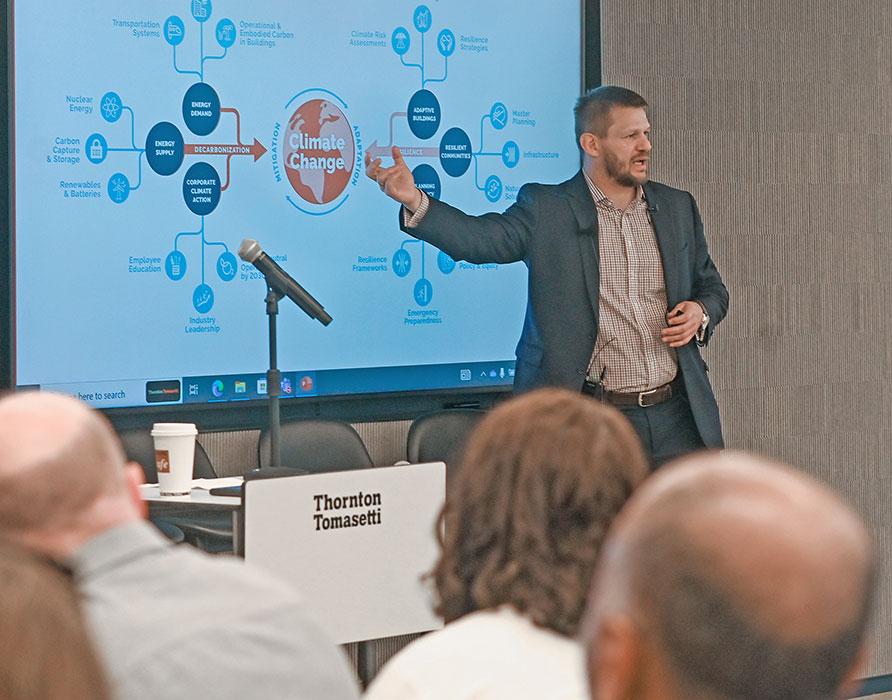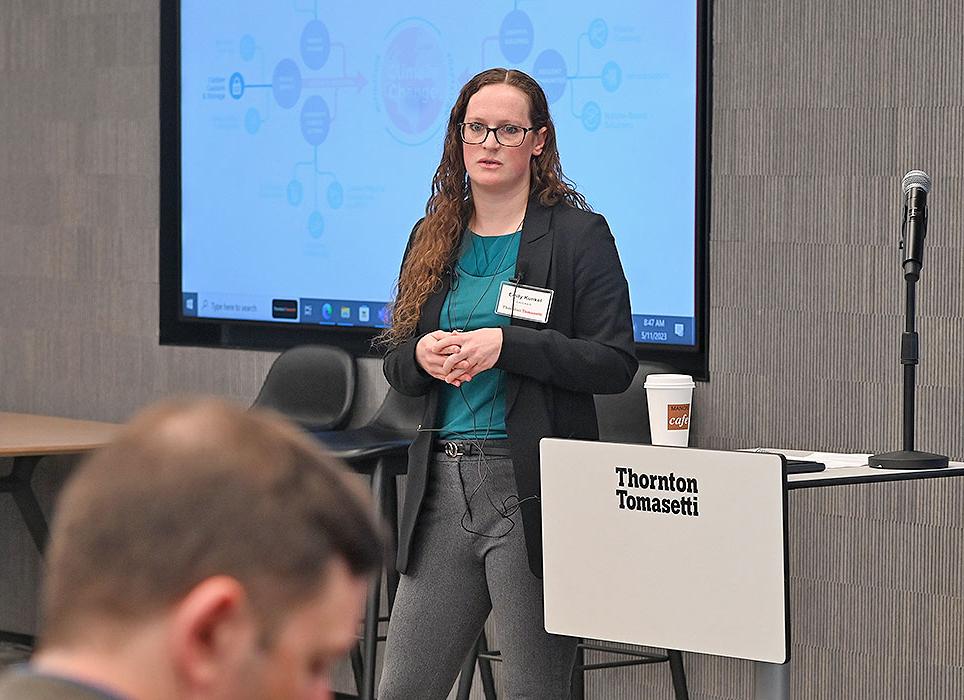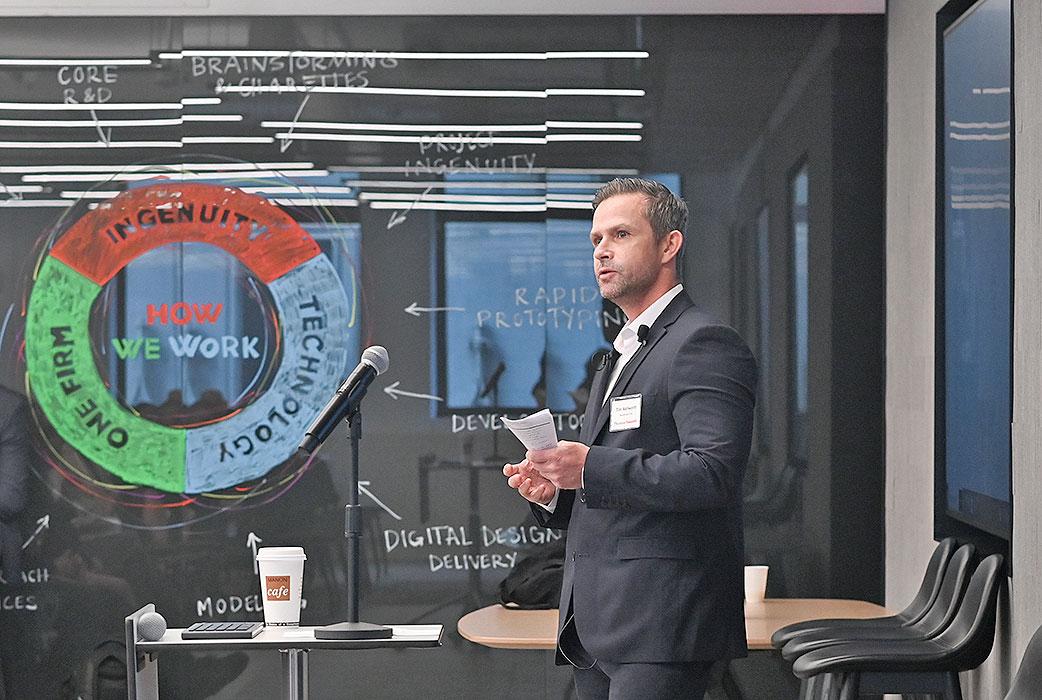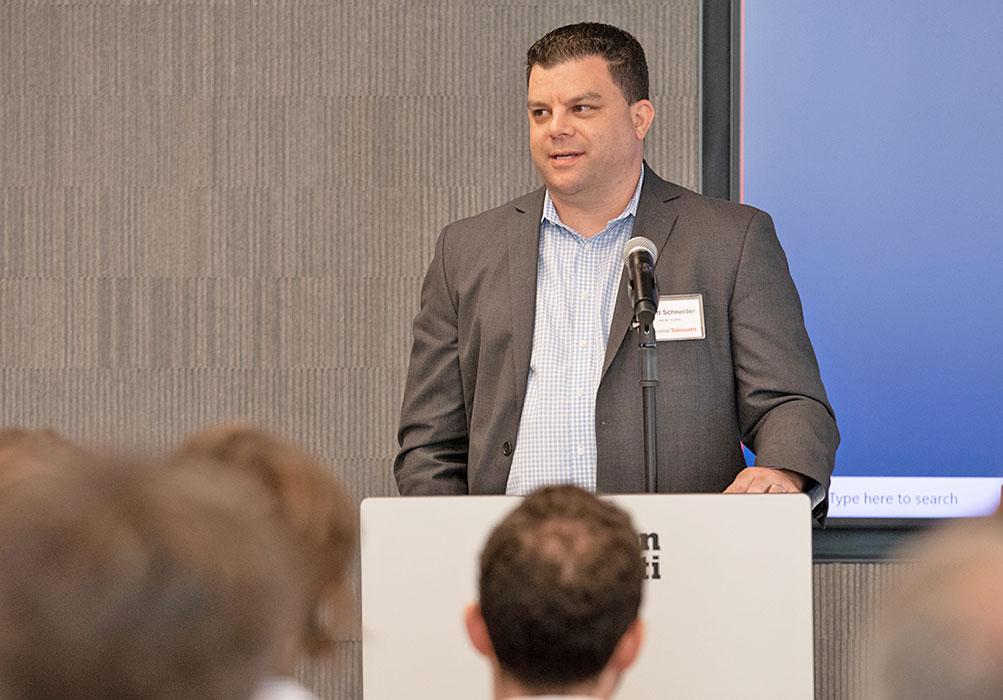Decarbonizing Today for Tomorrow's World, and...
What does decarbonization entail, and what does its future look like?
To accelerate action against climate change, the 2015 Paris Agreement established a multinational goal of limiting the rise in global temperatures to 2°C – preferably 1.5°C – above preindustrial levels. This ambitious goal is attainable, but only through monumental, cooperative efforts to reduce the amount of CO2 released into Earth’s environment.
What does decarbonization entail, and what does its future look like? We sat down with Associate Principal Tim Ashworth, Vice President Emily Kunkel, Principal Scott Schneider and Senior Principal Pawel Woelke to discuss.
BRIEFLY, WHAT IS DECARBONIZATION?
TIM It’s reducing greenhouse-gas emissions from everyday processes like energy generation; distribution and use in construction, manufacturing and transportation; and agricultural processes.
EMILY Construction, manufacturing and the burning of fossil fuels inevitably produce greenhouse-gas emissions, so another part of the equation is direct air capture – removing CO2 that is already in the atmosphere.
WHY IS DECARBONIZATION IMPORTANT ON A GLOBAL SCALE?
PAWEL Large industrial countries are the main sources of CO2 emissions. But islands and coastal countries that contribute the least may be the hardest hit. We’re in a position to help those who might not have the means to help themselves.
SCOTT Climate change is the most pressing problem the world faces. We want to do all we can to solve it – to make the world a better place for our kids. It’s a global challenge, and it’s hard. But we’re good at solving hard problems.
We’re in a position to help those who might not have the means to help themselves.
HOW ARE WE PARTNERING WITH OTHERS TO ACHIEVE DECARBONIZATION?
EMILY We’re linking industries with novel approaches to decarbonization and introducing them to carbon capture and storage, hydrogen, and other options for energy supply and materials manufacturing. We’re also enabling expansion of renewables, safe deployment of energy storage systems and small nuclear reactors, and providing the means to track and manage embodied carbon in building projects.
SCOTT We can’t solve the whole problem alone, but we can encourage others to move in the right direction – we can help architects to design efficient buildings, suppliers to alter how they source and make concrete, and stakeholders in other industries to think about new materials with smaller carbon footprints.
PAWEL We’re leading the discussion with clients and engaging the public as well. In addition to explaining the value chain of energy supply, distribution and demand, we can help them team with others to accomplish their objectives.
WHAT NEW APPROACHES DO YOU EXPECT TO EMERGE WITHIN THE NEXT FIVE TO 10 YEARS
EMILY CO2 utilization will continue to develop. Commercial technologies will emerge for manufacturing products with CO2 rather than injecting it underground. It could be used to make fuels or materials that help reduce embodied carbon in concrete.
SCOTT New, lower-carbon building materials. And because we build with so much concrete, it’s an area where we’ll see big investments – mixes that use little to no cement, new ways of manufacturing and more efficient transportation methods.
TIM Small and micro modular reactors already use nuclear fission to produce electricity, but I think fusion will happen too. This transition will be powerful, because with the abundant energy they both generate, we can electrify most processes. We can also expect major advances in grid-scale batteries.




